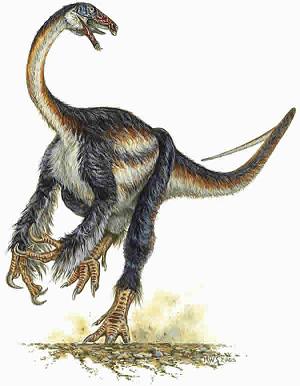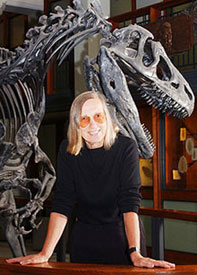
Dinosaurs which were the earth’s dominant inhabitants in the pre-historic era were wiped out suddenly. Scientists believe it could be due to some major changes in the earth’s climate, perhaps due to earthquakes, volcanic eruptions, meteoric impacts etc.
But, a new theory has been proposed by a Pinceton University researcher to unravel the most persistent paleontological murder mystery. According to the researcher, the death of dinosaurs has an India angle. The researcher, Gerta Keller, believes that a series of huge volcanic eruptions in India may have killed off dinosaurs 65 million years ago — and not a meteor impact in the Gulf of Mexico, as widely believed.
Keller believes, the eruptions, which created the gigantic Deccan Traps lava beds, caused dinosaurs to die. This belief is the result of a series of investigations to pin down the time of the eruptions.
Releasing the findings of her study, at the annual meeting of the Geological Society of America in Denver Keller said,
It’s the first time we can directly link the main phase of the Deccan Traps to the mass extinction.
According to Keller, the main phase of the Deccan eruptions spewed 80 percent of the lava that spread out for hundreds of miles. It is calculated to have released ten times more climate altering gases into the atmosphere than the Chicxulub meteor impact in Mexico, which happened more or less around the same time.

The crucial link between the eruption and the mass extinction of Dinosaurs is available in the form of microscopic marine fossils that are known to have evolved immediately after the mysterious mass extinction event.
The same telltale fossilized planktonic foraminifera were found at Rajahmundry, Andhra Pradesh (India) near the Bay of Bengal, about 1,000 km from the centre of the Deccan Traps. Rajahmundry hosts two lava “traps” containing four layers of lava each. Between the traps are about nine meters of marine sediments. Those sediments just above the lower trap, which was the mammoth main phase, contain the incriminating microfossils.
Previous researches had narrowed the Deccan eruption timing to within 800,000 years of the extinction event. But later radiometric dating of argon and potassium isotopes in minerals narrowed the age to within 300,000 years of the 65-million-year-old Cretaceous-Tertiary boundary, sometimes called the K-T boundary.
Keller feels that the microfossils are far more specific, because they demonstrate directly that the greatest phase of the eruption ended right when the mass extinction event began. That sort of clear-cut timing has been a lot tougher to pin down with Chicxulub-related sediments, which predate the mass extinction.
Keller explained,
Our results are consistent and mutually supportive with a number of new studies… that reveal a very short time for the main Deccan eruptions at or near the K-T boundary and the massive carbon dioxide and sulfur dioxide output of each major eruption that dwarfs the output of Chicxulub. Our K-T age control combined with these results strongly points to Deccan volcanism as the likely leading contender in the K-T mass extinction.
This new discovery takes us one more step towards finding out, how and when the dinosaurs suddenly disappeared from the face of earth. A lot more data on behaviour of earth and how it impacts life forms can be discovered with further experiments and researches thanks to dedicated scientists like Keller.


